The Pheasant-tailed Jacana stands out as a remarkable waterbird with its striking appearance and unique behaviors. With a white wing patch and head contrasting sharply with its black body and bright yellow neck patch, this bird is truly eye-catching.
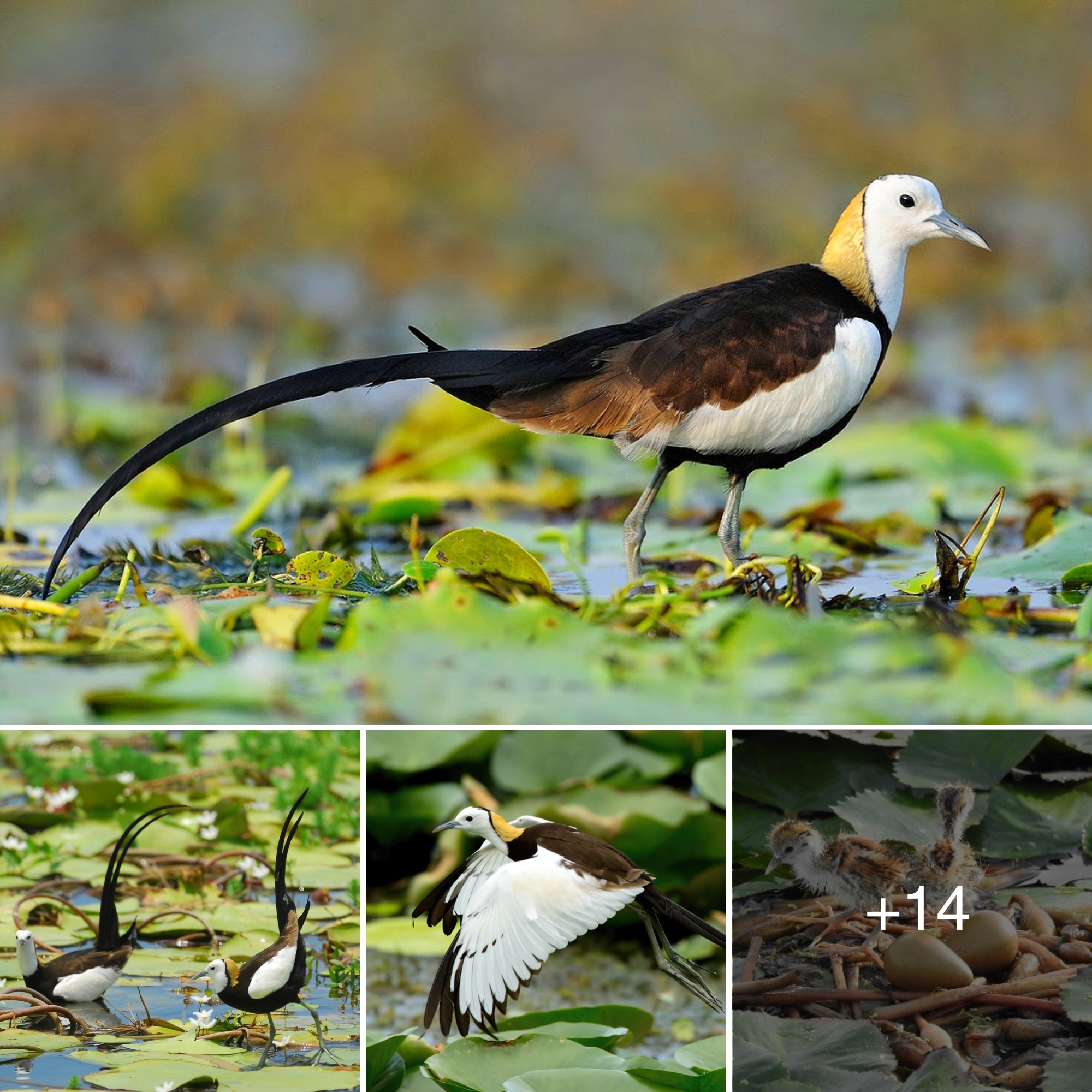
During the breeding season, the adult Pheasant-tailed Jacana showcases brown upperparts that contrast with a bright white wing panel. Its long tail adds to its graceful appearance, especially when walking on floating vegetation. Interestingly, its upperwing is predominantly white with a black tip, while its outermost primary flight feathers are black. The bird’s sharply pointed, whitish spur at the bend of the wing further distinguishes it. In non-breeding plumage, its tail becomes shorter, and its upperparts appear paler with a greenish-brown hue.
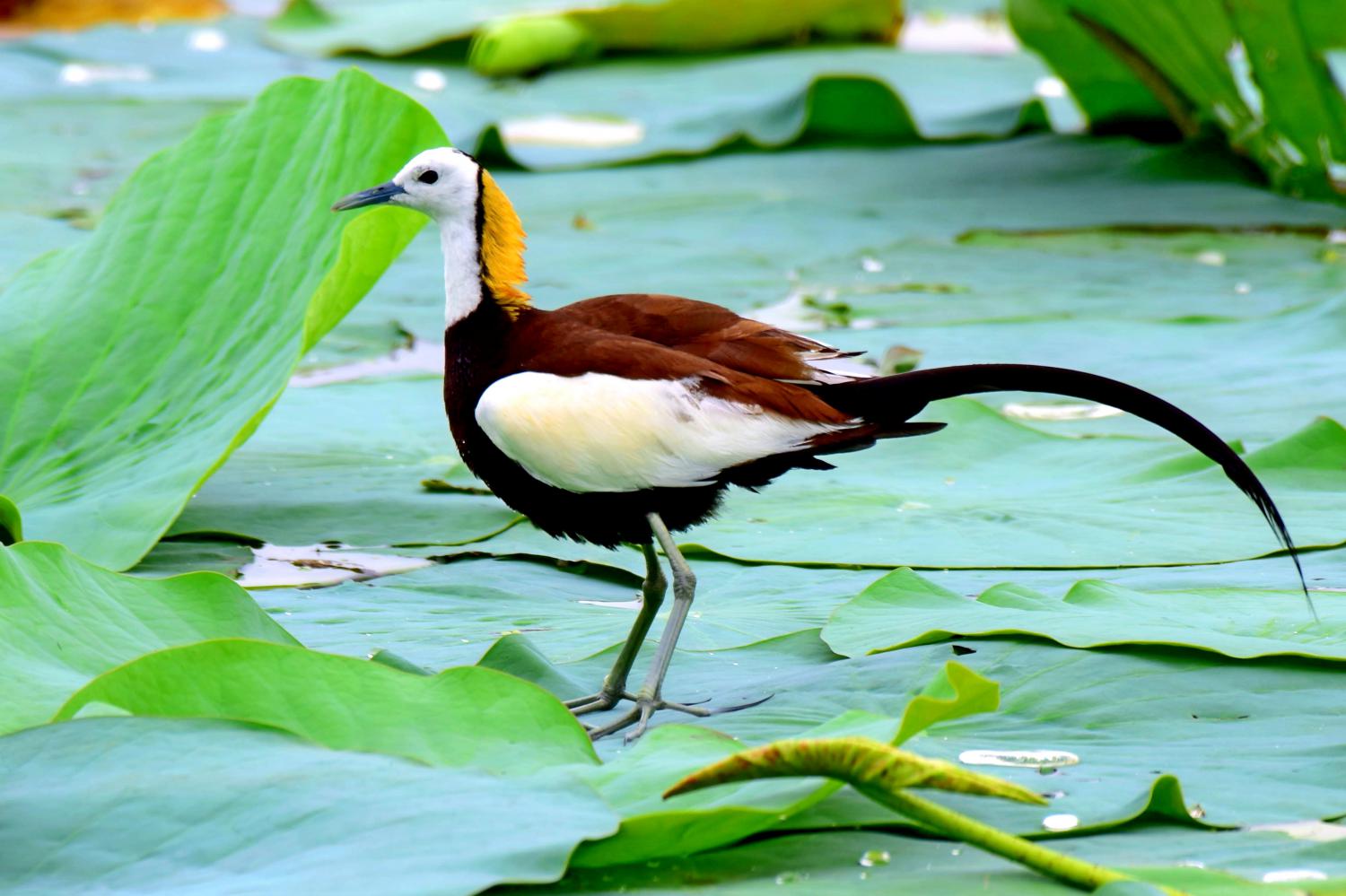

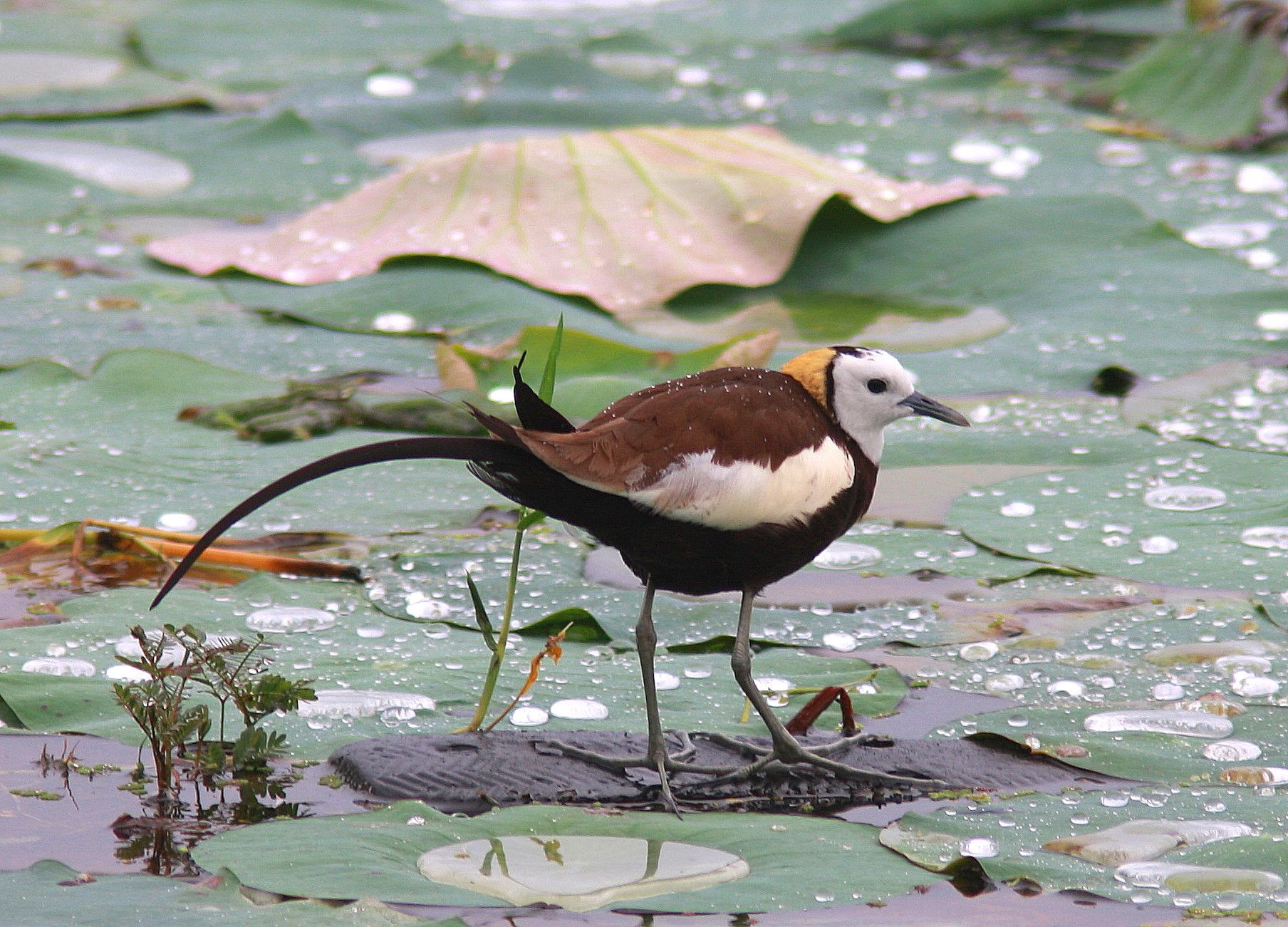
Females resemble males in terms of plumage but are noticeably larger. Both sexes possess a slaty-blue bill with a yellowish tip during the breeding season, which turns brown with a yellowish base in non-breeding plumage. Their eyes are brown, and their legs and long, slender toes vary in color depending on the season.
This species predominantly inhabits large freshwater wetlands, lakes, and ponds with emergent and floating vegetation, particularly those with lotus, water lilies, and similar aquatic plants. Its diet primarily consists of insects from the water surface and invertebrates picked from the roots and leaves of aquatic vegetation. The Pheasant-tailed Jacana’s breeding season occurs during the summer months in the northern parts of its range, while in India, Sri Lanka, and Southeast Asia, it corresponds to the wet or monsoon months.
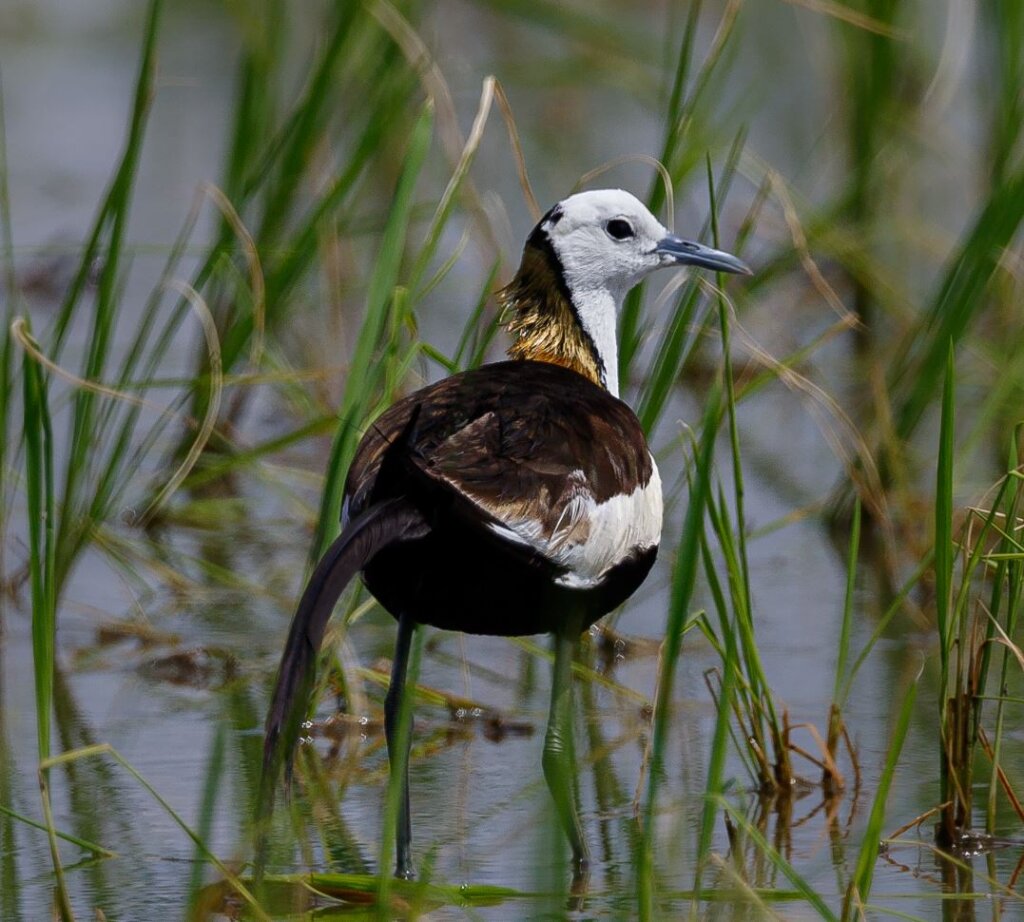
‘
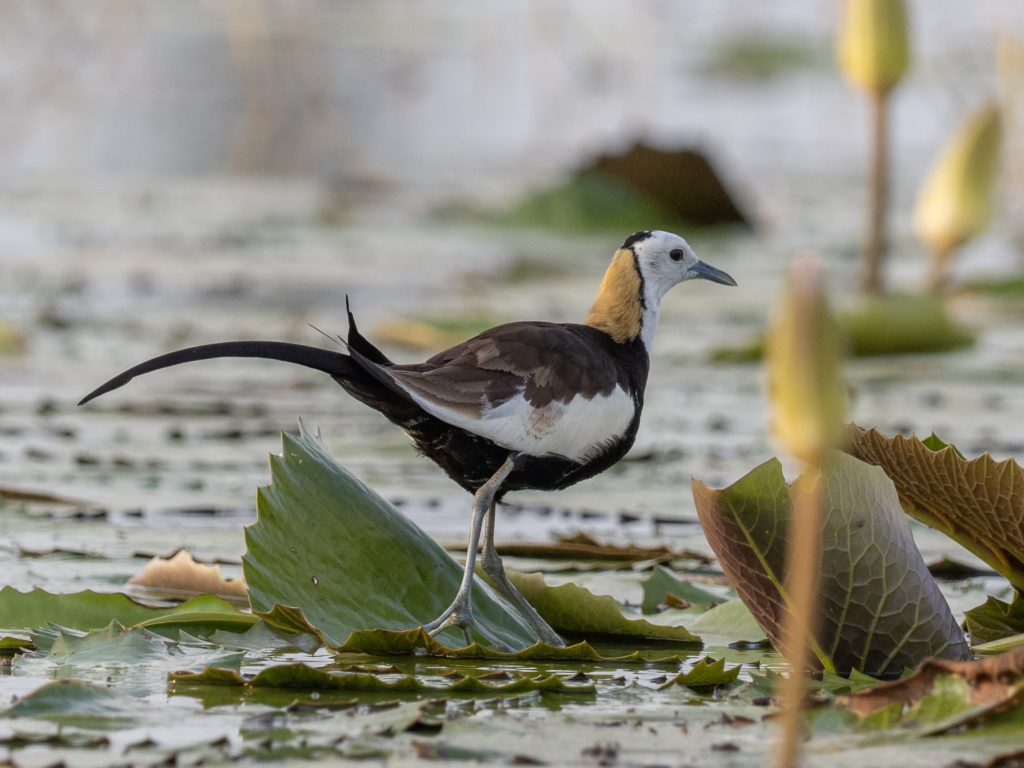

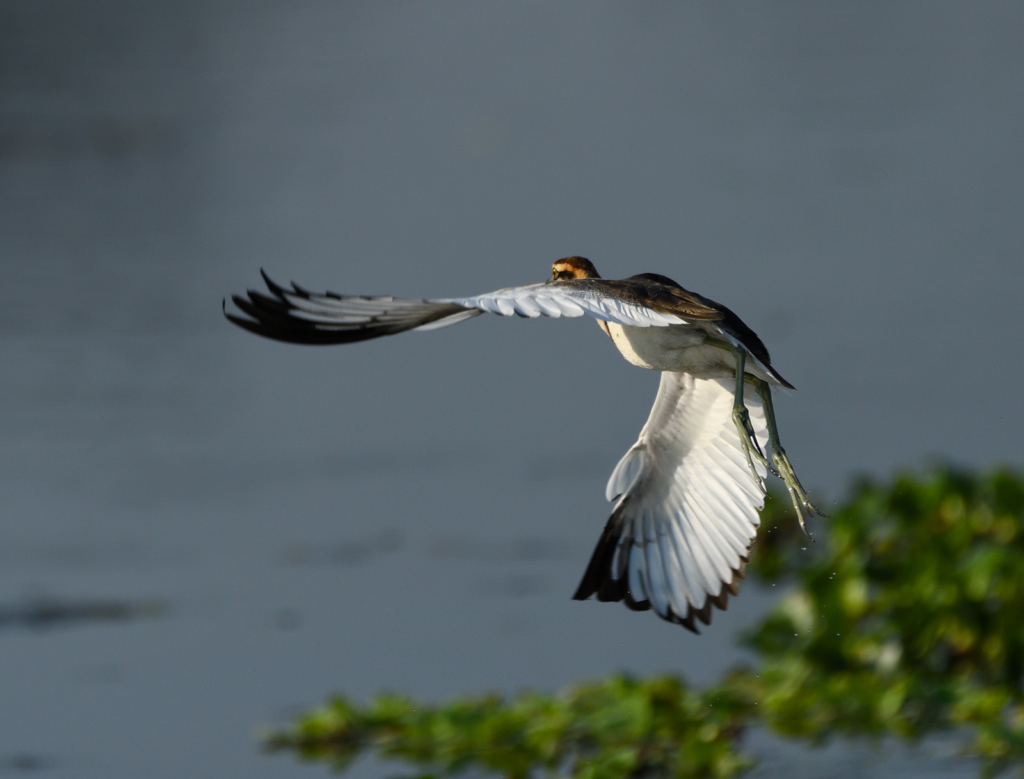

‘
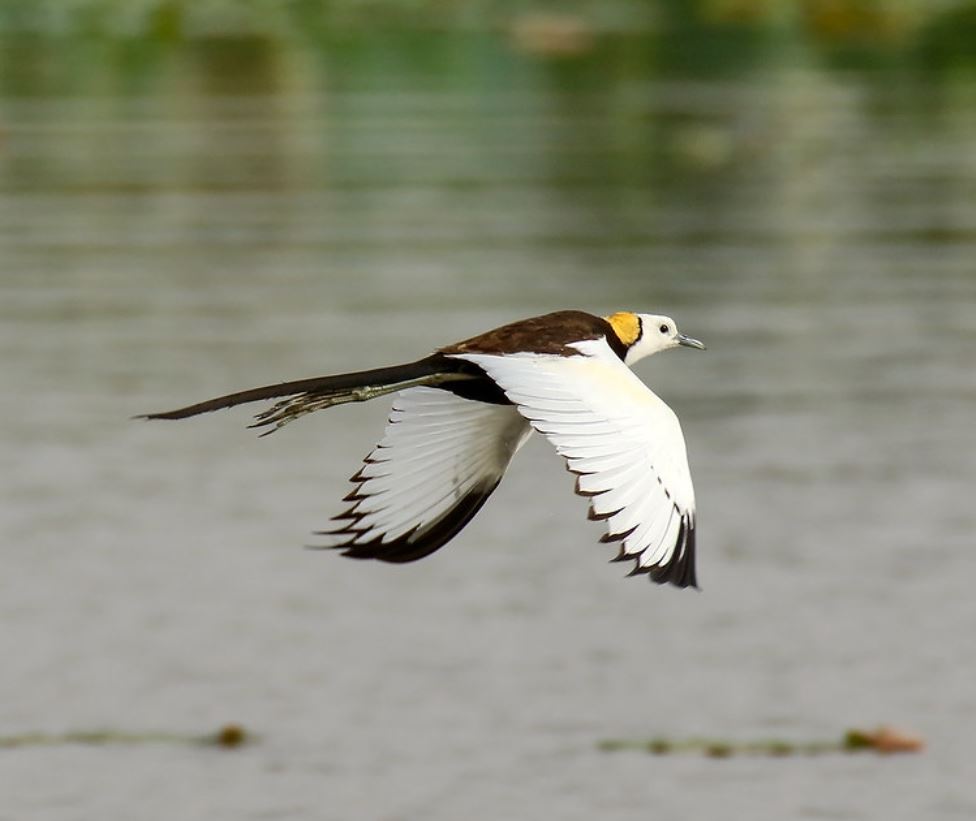
The mating system of the Pheasant-tailed Jacana is polyandrous, with males taking on most of the nesting duties such as nest building, incubation, and caring for the precocial chicks during feeding. Females focus on predator defense and other protective behaviors.
Despite not being globally threatened, localized declines have been observed, particularly in Eastern China, due to habitat loss and disturbances caused by human activities.